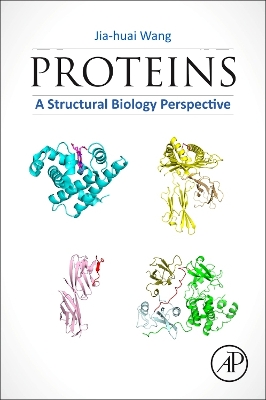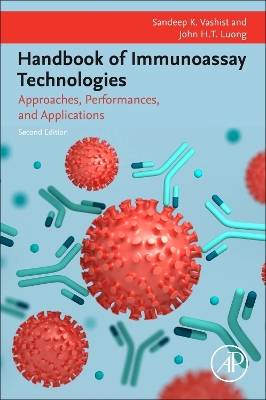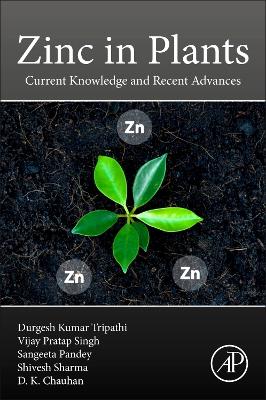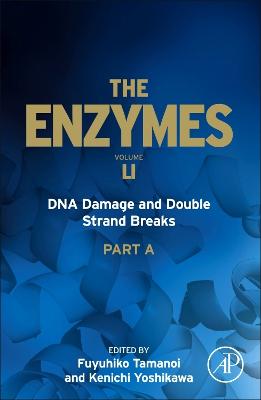Ureases
 -10%
portes grátis
-10%
portes grátis
Ureases
Functions, Classes, and Applications
Braun, Rodrigo Ligabu; R Da S Carlini, Celia Regina
Elsevier Science & Technology
02/2024
482
Mole
Inglês
9780323918008
15 a 20 dias
Descrição não disponível.
List of contributors About the editors Preface Part I Introduction 1 Ureases: an overview Conrado Pedebos and Rodrigo Ligabue-Braun 1.1 Introduction 1.2 Structure and activation 1.3 Relevance in health and technology 1.4 Conclusions References Part II Historical aspects 2 Historical hallmarks in urease study Paula Bacaicoa Caruso and Rodrigo Ligabue-Braun 2.1 Introduction 2.2 From urea to urease: 1700-1900 2.3 Enzymes are proteins and they can have nickel: 1900-75 2.4 Structure-function(s) of urease: 1981currently 2.5 Urease origins: notes on urease prehistory References 3 Genetics of plant urease, the enzyme that keeps surprising us Joe C. Polacco 3.1 An innocent young man 3.2 A quixotic quest: biological and biographical background 3.3 The urease play, with a cast of "firsts" 3.4 Nickel enters the fray 3.5 Soybean urease isozymes enter the fray 3.6 Nickel insertion proteins enter the fray (in vitro activation of soybean urease) 3.7 Does urea enter the fray? Of course, but from which tissues? 3.8 Dueling metabolic precursors of urea enter the fray 3.9 A urease-mediated insight into plant associations with bacteria 3.10 Other nickel roles in the plant world? 3.11 Are urea and NO children of the same parents? 3.12 Dedication References Part III Classes and special cases 4 Microbial ureases Celia Regina Carlini, Deiber Olivera-Severo and Rodrigo Ligabue-Braun 4.1 Historical aspects and relevance of microbial ureases 4.2 Structural organization of microbial ureases and evolution 4.3 Genomic organization and expression regulation of bacterial ureases 4.4 Urease-negative bacteria 4.5 Beneficial roles of bacterial ureases 4.6 Microbial ureases as virulence factors 4.7 Nonenzymatic properties of three-chained ureases 4.8 Concluding remarks References 5 Plant ureases: biochemistry, structure, physiological functions, role of urease inhibitors, and urease applications in industry Sandeep Kumar and Arvind M. Kayastha 5.1 Introduction 5.2 Historical milestones of urease 5.3 Biochemistry of urea catalysis 5.4 A Ubiquitous enzyme 5.5 Structure of plant urease 5.6 Urease inhibitors of agricultural interest 5.7 Physiological role of urease in plants 5.8 Nonenzymatic properties of plant ureases 5.9 Applications of ureases 5.10 Conclusion References 6 Jack bean urease Anuradha Balasubramanian and Karthe Ponnuraj 6.1 Introduction 6.2 Role of plant urease 6.3 Urease architecture 6.4 Challenges in crystallizing jack bean urease 6.5 Crystallization of JBU 6.6 X-ray analysis of native and fluoride-inhibited JBU 6.7 Structure determination of native and fluoride-inhibited JBU 6.8 Structure of JBU monomer 6.9 Oligomeric assembly 6.10 Active site architecture of JBU 6.11 Active site mobile flap 6.12 Insecticidal activity Acknowledgment References 7 Fungal ureases Alfred Botha and Barbra Toplis 7.1 Introduction 7.2 Producers of fungal ureases 7.3 Environmental role of fungal ureases 7.4 Fungal ureases as virulence factors 7.5 The role of ureases in fungal cell metabolism 7.6 Conclusion References Part IV Activation, catalysis, inhibition 8 Urease: structure, function, catalysis, and inhibition Luca Mazzei, Francesco Musiani, Barbara Zambelli, Stefano Benini, Michele Cianci and Stefano Ciurli 8.1 Introduction 8.2 The three-dimensional architecture of ureases 8.3 The active site of urease 8.4 The urease operon 8.5 The accessory proteins of urease 8.6 The urease maturation process 8.7 The catalytic mechanism 8.8 The inhibition of urease References 9 Inhibition of ureases: studies and applications Robert P. Hausinger 9.1 Introduction: the importance of urease inhibitors and inactivators 9.2 Proper design of urease inhibitor/inactivator studies 9.3 Inhibitors that bind directly to the urease metallocenter 9.4 Inactivators that react with the flexible protein flap covering the urease active site 9.5 Other compounds that reduce urease activity 9.6 Conclusion Acknowledgments References 10 Nonenzymatic properties of ureases Matheus V.C. Grahl, Augusto F. Uberti and Celia Regina Carlini 10.1 Introduction 10.2 Entomotoxic property of plant ureases 10.3 Antifungal effect of ureases 10.4 Exocytosis-inducing activity of ureases 10.5 Pro-inflammatory properties of ureases 10.6 Neurotoxicity of ureases in rodents 10.7 Structure versus nonenzymatic activities of ureases 10.8 Concluding remarks Acknowledgments References Part V Health applications 11 Ureases as drug targets in urinary tract infections Charles E. Deutch 11.1 Urinary tract infections 11.2 Role of urease activity in urinary tract infections 11.3 Ureases from urinary tract pathogens 11.4 Ureases from gram-negative bacteria 11.5 Ureases from gram-positive bacteria 11.6 Inhibition of uropathogenic ureases by specific chemicals 11.7 Hydroxyurea and other urea analogs 11.8 Acetohydroxamic acid and other hydroxamates 11.9 Flurofamide and other phosphoramides 11.10 Polyphenolic compounds 11.11 Omeprazole and other imidazoles 11.12 Inhibition of uropathogenic ureases by herbal extracts 11.13 Green tea extract 11.14 Uva ursi extract 11.15 Cranberry extract 11.16 Garlic extract 11.17 Other extracts 11.18 Further studies 11.19 New chemical inhibitors of urease activity 11.20 Inhibition of urease formation 11.21 Inhibition of Ni21 incorporation 11.22 Urease-specific vaccines 11.23 Conclusions References 12 Ureases as drug targets in fungal infections Anne Helene Souza Martinelli, Ana Paula Artusi Perin and Fernanda Cortez Lopes 12.1 Fungal infections 12.2 Fungal targets to drugs 12.3 Ureases as virulence factors in fungi 12.4 Fungal ureases as drug targets References Part VI Biotechnological applications 13 Reaching food security: harnessing urease inhibitors to meet the challenges of growing global population Andre?ia C.S. Ferreira, Rosana C. Cruz, Clara Q. Rosa, A?ngelo de Fa?tima and Luzia V. Modolo 13.1 Introduction 13.2 NBPT as a promoter of crop production 13.3 Use of hydroquinone 13.4 Use of Azolla to improve NBPT effectiveness 13.5 Use of Limus 13.6 Use of biochar 13.7 Use of biological preparations Acknowledgments References 14 Ureases as pesticides Leonardo Luis Fruttero, Natalia Rita Moyetta, Matheus V.C. Grahl, Anne Helene Souza Martinelli and Fernanda Cortez Lopes 14.1 Introduction 14.2 Synthetic pesticides versus biological control 14.3 Ureases as pesticides 14.4 Final conclusions and perspectives Acknowledgment References 15 Ureases in the beverage industry Elisa Tavilli and Marcello Fidaleo 15.1 Introduction 15.2 Acid urease 15.3 Application of acid urease to beverages 15.4 Kinetics of urea removal in wines 15.5 Use of immobilized acid urease in beverages 15.6 Concluding remarks References 16 Versatility of ureases: many uses for biotechnological and medical applications Kelvin Siqueira Hohl, Evelin Furtado Meirelles and Celia Regina Carlini 16.1 Why urease? Historical aspects of urease-based applications 16.2 Immobilization of ureases 16.3 Biocementation, bioremediation, and archeology 16.4 Dairy production 16.5 Beverage industry 16.6 Urease-assisted chemical synthesis 16.7 Biosensors 16.8 Medical applications 16.9 Concluding remarks References Index
Este título pertence ao(s) assunto(s) indicados(s). Para ver outros títulos clique no assunto desejado.
Urease; ureases; metalleoenzymes; urease applications; urease and drug discovery; urease therapeutics; urease inhibitor; urease inhibitors; nickel enzymes; ureolysis; urease metabolism
List of contributors About the editors Preface Part I Introduction 1 Ureases: an overview Conrado Pedebos and Rodrigo Ligabue-Braun 1.1 Introduction 1.2 Structure and activation 1.3 Relevance in health and technology 1.4 Conclusions References Part II Historical aspects 2 Historical hallmarks in urease study Paula Bacaicoa Caruso and Rodrigo Ligabue-Braun 2.1 Introduction 2.2 From urea to urease: 1700-1900 2.3 Enzymes are proteins and they can have nickel: 1900-75 2.4 Structure-function(s) of urease: 1981currently 2.5 Urease origins: notes on urease prehistory References 3 Genetics of plant urease, the enzyme that keeps surprising us Joe C. Polacco 3.1 An innocent young man 3.2 A quixotic quest: biological and biographical background 3.3 The urease play, with a cast of "firsts" 3.4 Nickel enters the fray 3.5 Soybean urease isozymes enter the fray 3.6 Nickel insertion proteins enter the fray (in vitro activation of soybean urease) 3.7 Does urea enter the fray? Of course, but from which tissues? 3.8 Dueling metabolic precursors of urea enter the fray 3.9 A urease-mediated insight into plant associations with bacteria 3.10 Other nickel roles in the plant world? 3.11 Are urea and NO children of the same parents? 3.12 Dedication References Part III Classes and special cases 4 Microbial ureases Celia Regina Carlini, Deiber Olivera-Severo and Rodrigo Ligabue-Braun 4.1 Historical aspects and relevance of microbial ureases 4.2 Structural organization of microbial ureases and evolution 4.3 Genomic organization and expression regulation of bacterial ureases 4.4 Urease-negative bacteria 4.5 Beneficial roles of bacterial ureases 4.6 Microbial ureases as virulence factors 4.7 Nonenzymatic properties of three-chained ureases 4.8 Concluding remarks References 5 Plant ureases: biochemistry, structure, physiological functions, role of urease inhibitors, and urease applications in industry Sandeep Kumar and Arvind M. Kayastha 5.1 Introduction 5.2 Historical milestones of urease 5.3 Biochemistry of urea catalysis 5.4 A Ubiquitous enzyme 5.5 Structure of plant urease 5.6 Urease inhibitors of agricultural interest 5.7 Physiological role of urease in plants 5.8 Nonenzymatic properties of plant ureases 5.9 Applications of ureases 5.10 Conclusion References 6 Jack bean urease Anuradha Balasubramanian and Karthe Ponnuraj 6.1 Introduction 6.2 Role of plant urease 6.3 Urease architecture 6.4 Challenges in crystallizing jack bean urease 6.5 Crystallization of JBU 6.6 X-ray analysis of native and fluoride-inhibited JBU 6.7 Structure determination of native and fluoride-inhibited JBU 6.8 Structure of JBU monomer 6.9 Oligomeric assembly 6.10 Active site architecture of JBU 6.11 Active site mobile flap 6.12 Insecticidal activity Acknowledgment References 7 Fungal ureases Alfred Botha and Barbra Toplis 7.1 Introduction 7.2 Producers of fungal ureases 7.3 Environmental role of fungal ureases 7.4 Fungal ureases as virulence factors 7.5 The role of ureases in fungal cell metabolism 7.6 Conclusion References Part IV Activation, catalysis, inhibition 8 Urease: structure, function, catalysis, and inhibition Luca Mazzei, Francesco Musiani, Barbara Zambelli, Stefano Benini, Michele Cianci and Stefano Ciurli 8.1 Introduction 8.2 The three-dimensional architecture of ureases 8.3 The active site of urease 8.4 The urease operon 8.5 The accessory proteins of urease 8.6 The urease maturation process 8.7 The catalytic mechanism 8.8 The inhibition of urease References 9 Inhibition of ureases: studies and applications Robert P. Hausinger 9.1 Introduction: the importance of urease inhibitors and inactivators 9.2 Proper design of urease inhibitor/inactivator studies 9.3 Inhibitors that bind directly to the urease metallocenter 9.4 Inactivators that react with the flexible protein flap covering the urease active site 9.5 Other compounds that reduce urease activity 9.6 Conclusion Acknowledgments References 10 Nonenzymatic properties of ureases Matheus V.C. Grahl, Augusto F. Uberti and Celia Regina Carlini 10.1 Introduction 10.2 Entomotoxic property of plant ureases 10.3 Antifungal effect of ureases 10.4 Exocytosis-inducing activity of ureases 10.5 Pro-inflammatory properties of ureases 10.6 Neurotoxicity of ureases in rodents 10.7 Structure versus nonenzymatic activities of ureases 10.8 Concluding remarks Acknowledgments References Part V Health applications 11 Ureases as drug targets in urinary tract infections Charles E. Deutch 11.1 Urinary tract infections 11.2 Role of urease activity in urinary tract infections 11.3 Ureases from urinary tract pathogens 11.4 Ureases from gram-negative bacteria 11.5 Ureases from gram-positive bacteria 11.6 Inhibition of uropathogenic ureases by specific chemicals 11.7 Hydroxyurea and other urea analogs 11.8 Acetohydroxamic acid and other hydroxamates 11.9 Flurofamide and other phosphoramides 11.10 Polyphenolic compounds 11.11 Omeprazole and other imidazoles 11.12 Inhibition of uropathogenic ureases by herbal extracts 11.13 Green tea extract 11.14 Uva ursi extract 11.15 Cranberry extract 11.16 Garlic extract 11.17 Other extracts 11.18 Further studies 11.19 New chemical inhibitors of urease activity 11.20 Inhibition of urease formation 11.21 Inhibition of Ni21 incorporation 11.22 Urease-specific vaccines 11.23 Conclusions References 12 Ureases as drug targets in fungal infections Anne Helene Souza Martinelli, Ana Paula Artusi Perin and Fernanda Cortez Lopes 12.1 Fungal infections 12.2 Fungal targets to drugs 12.3 Ureases as virulence factors in fungi 12.4 Fungal ureases as drug targets References Part VI Biotechnological applications 13 Reaching food security: harnessing urease inhibitors to meet the challenges of growing global population Andre?ia C.S. Ferreira, Rosana C. Cruz, Clara Q. Rosa, A?ngelo de Fa?tima and Luzia V. Modolo 13.1 Introduction 13.2 NBPT as a promoter of crop production 13.3 Use of hydroquinone 13.4 Use of Azolla to improve NBPT effectiveness 13.5 Use of Limus 13.6 Use of biochar 13.7 Use of biological preparations Acknowledgments References 14 Ureases as pesticides Leonardo Luis Fruttero, Natalia Rita Moyetta, Matheus V.C. Grahl, Anne Helene Souza Martinelli and Fernanda Cortez Lopes 14.1 Introduction 14.2 Synthetic pesticides versus biological control 14.3 Ureases as pesticides 14.4 Final conclusions and perspectives Acknowledgment References 15 Ureases in the beverage industry Elisa Tavilli and Marcello Fidaleo 15.1 Introduction 15.2 Acid urease 15.3 Application of acid urease to beverages 15.4 Kinetics of urea removal in wines 15.5 Use of immobilized acid urease in beverages 15.6 Concluding remarks References 16 Versatility of ureases: many uses for biotechnological and medical applications Kelvin Siqueira Hohl, Evelin Furtado Meirelles and Celia Regina Carlini 16.1 Why urease? Historical aspects of urease-based applications 16.2 Immobilization of ureases 16.3 Biocementation, bioremediation, and archeology 16.4 Dairy production 16.5 Beverage industry 16.6 Urease-assisted chemical synthesis 16.7 Biosensors 16.8 Medical applications 16.9 Concluding remarks References Index
Este título pertence ao(s) assunto(s) indicados(s). Para ver outros títulos clique no assunto desejado.







